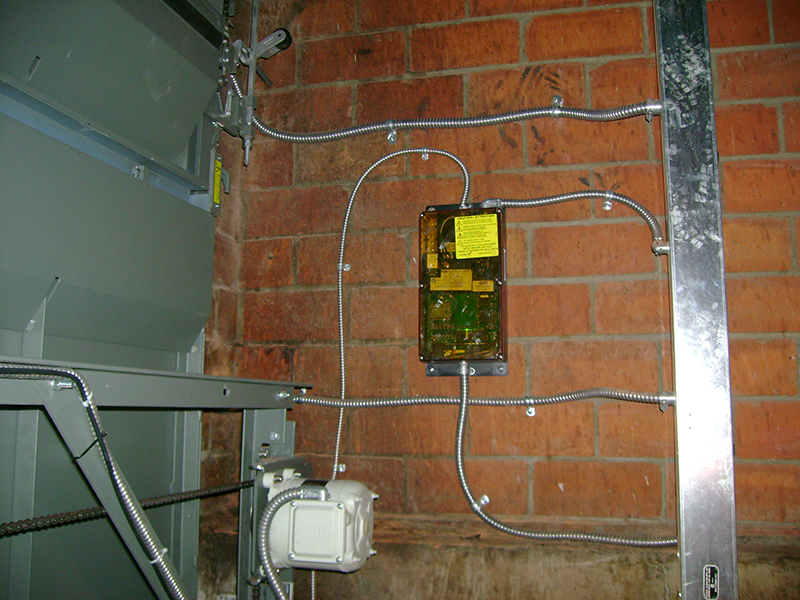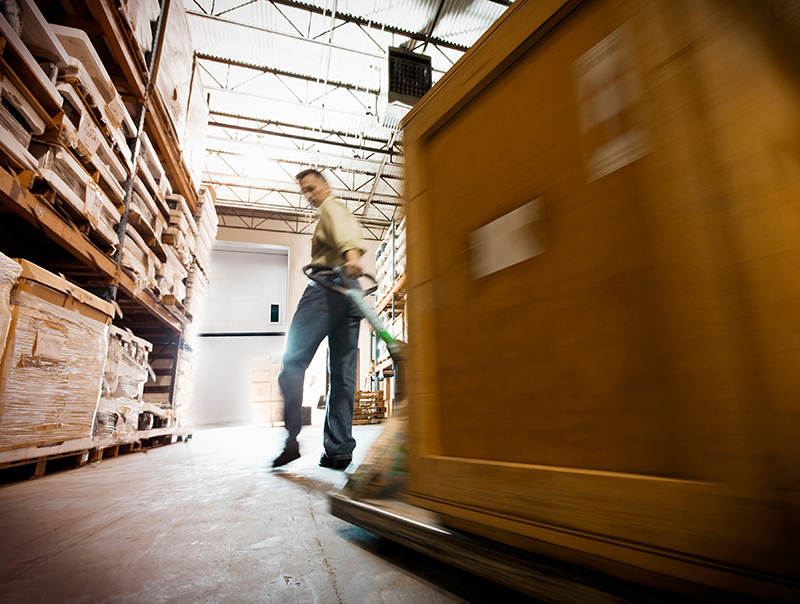Photo: © Kone

News | April 2024
Kone acquires Paca Ascenseurs
Assa Abloy has sold its lift maintenance business Paca ascenseur (Paca) in France to Kone. With this acquisition, Kone intends to strengthen its local presence in the region.

August 2015
When considering the most efficient way to move freight/goods vertically during a buildings’ design phase, consideration is given to the elevator/lift usage, materials being transported, capacity and size of the potential elevator/lift, etc.
Commercial/industrial applications utilize vertical sliding doors, particularly biparting, because they have proven advantages.
A biparting vertical sliding door opens and closes in the vertical direction providing a clear opening for elevator loading and unloading with pallets by either hand truck or forklift. Horizontal door systems are subject to impact by the pallets during the loading and unloading process. Statistics show that up to 80% of elevator shutdowns are related to door call-backs.
Proper door selection for the loading and unloading application is a critical factor in minimizing the elevator maintenance costs and commercial losses to building owners such as elevator/lift down time, emergency repairs, lost of use and more.
 Vertical biparting doors offer space savings allowing building designers to maximize floor space and reduce the elevator/lift footprint. The biparting panels open in the center traveling below and above the door entrance.
Vertical biparting doors offer space savings allowing building designers to maximize floor space and reduce the elevator/lift footprint. The biparting panels open in the center traveling below and above the door entrance.
The space required on either side of the elevator shaft is reduced to a minimum (13 inches, 330 mm) in comparison with horizontal sliding door alternative where the panels travel to the side(s) of each opening; this requires significantly more space than vertical sliding to accommodate the panels.
With increasing real-estate development costs, vertical biparting doors provide a space saving advantage. The vertical sliding door, one, two or three panel, is an alternative to the biparting door where there is insufficient pit depth or floor-to-floor travel.
Robustness of the door panel construction and operating system are major factors in reducing the elevator down time. Vertical sliding doors typically utilize heavier gauge materials and heavy-duty operating equipment to withstand the rigors of commercial/industrial applications. Durable scratch resistant Powder Coat is applied at the time of manufacture to ensure optimum aesthetics and longevity of the door panels.
Today’s vertical sliding elevator doors incorporate modern technology offering a VVVF (Variable Voltage Variable Frequency) drive system with closed loop controls. In addition to reduced wire and wiring between components these controls provide true door positioning and are machine room less.
The VVVF Drive is self learning – self adjusting and creates a smooth open and close sequence, this is ideally suited for applications that require a quiet operation. The car gate/door controller is mounted on the car top similar to a passenger door controller and hoistway door controllers are mounted in the hoistway next to each door opening.
 Safety in the operation of vertical sliding doors has evolved to new standards. Door systems are provided with Light Curtain(s) reversing sensors comparable to what is utilized for passenger applications and in some cases a soft contact reversing edge strip mounted to the leading edge of the car door is also supplied for redundant safety.
Safety in the operation of vertical sliding doors has evolved to new standards. Door systems are provided with Light Curtain(s) reversing sensors comparable to what is utilized for passenger applications and in some cases a soft contact reversing edge strip mounted to the leading edge of the car door is also supplied for redundant safety.
VVVF drive provides low speed; low kinetic energy a Warning Buzzer ensures that elevator operators/users are aware of closing doors. Vertical sliding doors are certified to meet the fire protections requirements of fire authorities on an international level, UL10B, CAN S104, EN81-58. The door design and critical door safety devices such as door interlocks are also certified to international standards. AMSE A17.1 /B44- 2013 and EN81 the European Elevator Safety Standard.
Vertical biparting doors are known by most building managers and owners as a positive investment in the building considering the longevity of this door system and low maintenance attributes in comparison to horizontal door alternatives; for commercial/industrial applications where passenger use is not required there is no better elevator door solution.
Write a comment